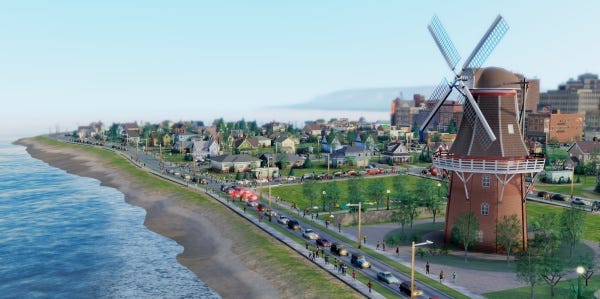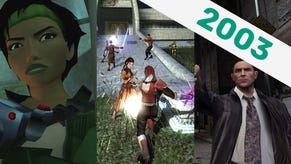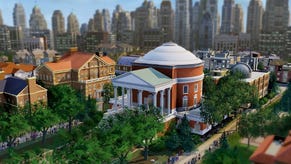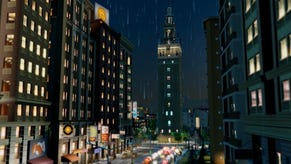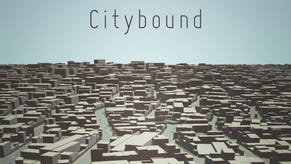Hands On: SimCity
Putting Falkirk on the map
As SimCity nears release (March 8th in the UK), we sent natural born mayor Cara Ellison to sit down with the game for a day. She recreated inner-Scotland.
I dreamed of marching into EA HQ in a black pencil dress and high heels and Malcolm Tuckering all my consonants: “ALL RIGHT EA. RUIN MY CHILDHOOD. COME ON. RUIN IT.”
As it is, I stumbled into EA covered in doughnut crumbs wearing a bedraggled jumper dress and giant wooly socks and then squeaked “Hi I’m Cara hi can I see Simcity please.”
The expectation was that I’d arrived to entirely Nick Clegg my memories of Simcity 2000, the last time I’d played and truly enjoyed a Sim[insert noun here] game. My brain sloshed with cynicism, oozed elegy out of my earholes. But as I was guided into a cloistered room of PCs and left to gently sink into strategy mode I started to thaw a little. A nice PC and a few calm hours of geek vernissage, I was a woman who had to have a mouse forcibly removed from her hand. Only two lugubrious samosas were left for lunch by the time I went to get some. I decided to name a city “lugubrious samosa” as I grumbled back to my desk.
The moment my mind collided with Simcity’s new Glassbox engine: a little moment a way into the tutorial. I planted my first power station on the ground in the dead of night. The network of familiar residential, commercial and industrial districts laid between roads slowly lit up and their little lights spread across the dark, like screeds of tiny fireflies awaking in a wave across the map. The power station made a noise like a heart beat. Every layer of information in this game visually ebbs and flows - living infographics. Click for a layer showing water actively pumping across the city in neat blobs, another for brown blobs showing where your sewage is going, and one a living bar chart indicating how your population is growing denser, thicker in different areas. Each new fluctuating overlay - of which there are so many - has you feel almost as if you are watching a body grow up, change, and take shape into an adult before you. The music has a pulse that indicates when things are happening in time to events. You can trace all of your residents’ journeys to and from work; click them to find out where they have been (stressful day at work) where they are going (to rob a warehouse) and you can wait to see what happens next (unceremoniously shot by cop in front of mini mart).
The essential arteries? Roads. The prevailing memory I have (besides the adorable midi music) of SimCity 2000 were the little cars on each road tile, eternally driving off the edge of the tile and popping back into existence at the start of it. We have journeyed a long way since then: you can zoom in and follow every car to its destination now thanks to Glassbox’s agent simulation. In SimCity 2000, roads were merely a simple tool that would ensure the consecutive three blocks would be populated according to your choice of light, medium or dense residential, commercial or industrial sites. In this new iteration, it is the roads themselves that you upgrade to affect density of your population. You can choose low, medium or high density roads at accruing expense - avenues or single dirt tracks as you please. In turn, your districts will fill up as designated by the road capacity. This is a nice idea - and adds interesting strategy - however it becomes fiddly to upgrade in the later game, where you wish you could just drag over and upgrade whole areas. It might take a little more skill for me to master the nuance of when and how to upgrade. But as Kip Katsarelis, the Senior Producer on the game said, mastering the perfect size of districts and layout of roads is for the “min-maxers”, and I immediately remembered how long it took me to figure out how to min-max Simcity 2000. Friendless NERD, I thought to myself. You sacrificed kissing boys for min-maxing. You could have been min-maxing faces.
There’s been some concern about the size of the new SimCity maps. It is true they are smaller, and therefore fill up more quickly - but they are more difficult to game, and more intricate with it. It is a delicate ecosystem. Part of the reason I think they are smaller is that the direction of the game is towards regions - not the maximisation of one sole city. In a region map, there are other spots to build cities in, and an additional Great Work spot in which to cultivate a landmark city such as - yes! - an Arcology of yore. So you can breathe life into a whole region, creating each city with distinct and differing personalities that supply each other with trade and workers, or volunteering extra resources. Specialisations in education, entertainment, mining or other industries such as tourism are available to upgrade to so that each region has a variety of cities that are all different. I have a particular fetish for online communities: games that bring people together to work together and make their own narratives. SimCity seems like it has a wonderful capacity to develop that sort of community, barring EA’s servers imploding (I am Cara’s increased sense of foreboding).
I asked Kip Katsarelis (Senior Producer with a calming Lloyd Grossmanesque lilt) why they chose to make the maps smaller. “There were a few factors that went into this decision. Clearly there had to be a limited at some point due to technical constraints. The amount of detail in the world meant that there were both graphical and computational constraints to adhere to. Game design was the other reason. Putting limits to the boundaries meant that players would have to make decisions about how they built their cities. Space is a resource and something real city planners need to think about when planning a city. We wanted to bring that decision making into this SimCity and make it a core part of the gameplay. There are countless ways and combinations to build cities and combinations of cities. Do I build a dump in my beautiful vacation hot spot or can I have my neighbouring city take care of my garbage problem? My neighbouring city has a bustling shopping district, this means I can focus my city on industry. Great games are made up by a few simple rules.”
Let’s talk metagame. I began on a private map, single player. My first ‘city’ I named Falkirk (a small joke for the Scottish readers there - it is a peely-wally town) and mostly sent all my garbage to the nearby second city of Aberdeen, which was meant to be a city specialising in oil but I never actually dug much up (SATIRE). Aberdeen became a fairly smelly city because I kept sending rubbish there (that’s for IDing me at Alaska bar when I was 14 you narks) and I imagined that seagulls the size of bloodhounds were roaming the streets there, picking at half-eaten chips. Halfway through play I got a message informing me that “Aberdeen has too many uneducated kids. Put some bus stops in your city so your kids can go to school in Falkirk.” This made me titter far more than is actually necessary, as did “Falkirk has a health problem. You should build a clinic and volunteer extra ambulances to Falkirk.” You fat wee macaroni pie addicts. It was at this point I noted in dismay that I hadn't used the new ‘curvy’ and ‘roundabout’ tools to draw roads that spelled out ‘bawbag’ or something to that effect. They’ll never let me back into Scotland now.
For the multiplayer, it is possible to collaborate with other players on a region, making cities to help each other out - or not, as may be the case. I decided to join another journalist’s region (hurr) and start building towards making a Great Work, so I cranked the speed up to Cheetah and got started on a city. Halfway through, I decided to take a visit to his city. To my ultimate dismay, he’d made a beautifully laid out city in the shape of a massive tightly-curled swirl fanning out from his Town Hall. It was a masterpiece. I went back to my city ‘Carasville’ - a badly laid out patchwork mess of super wealthy citizens overburdened with tennis courts and fountain parks - and immediately began plans to send some sloppy sewage to him. I can’t remember if I achieved it, but if some journalist’s preview appears on another site about some woman journalist with bad spatial awareness (poss colour blindness) piping sewage into his city: I am truly sorry. I was just jealous of your swirly.
For me, one of the most interesting aspects of SimCity is its political, sociological edge. A lot of the decisions, such as the class system - low wealth citizens, medium wealth citizens, and high wealth citizens - and the fact that Sims commit more crimes the less educated they are, suggest an element of sociological research. I asked Kip if the SimCity dev team consulted particular sources for these.
“We looked at what was going on in the world around us and wanted to bring these social and economic issues into SimCity. We had many sources of reference at our disposal including books, documentaries, the Internet, and more. There has been lots of research done that shows the relationships between criminal activity and education levels. There are studies that show the types of crimes change based on criminals with higher education, that the crimes go from more violent types of crimes to white collar crimes. This is why in SimCity, you start to get white collar crimes (embezzler) in your city when you have education and business, but lack proper police coverage. Crime in SimCity was one of our deeper social systems we researched, but there are many others including wealth levels, education, health, and happiness.”
I was also concerned about the always online nature of this game, as I assume many of you are, so I asked EA the following questions: The always online nature of SimCity seems to imply that once EA stop maintaining SimCity servers the game will stop being accessible. Does this mean consumers should consider that SimCity has a limited life expectancy? What if the EA servers are overloaded or go down for any reason? They replied:
“I can't speak to what the future may hold. What I do know is that EA has shown that where there are active communities playing a game, they will maintain the servers. Spore servers are still up to this day. We are looking at this SimCity as a live service and something we plan to support after launch with new content, polish and everything that goes with a live service. Maxis and EA have been in online gaming for a long time and have some of the best people and infrastructure in the business to ensure our servers are stable at launch.”
I’m still cynical. EA have shut down servers for Mercs 2 and LOTR, Fifa and The Sims 2 in favour of newer or more populated titles. Here is the catch: this game is good. It’s in your interests, as PC gamers, to participate in this game and its multiplayer options, because it is entertaining, solid, engaging in its systems and interfaces. It is a pleasurable thing to take part in, and I think really adds something to the gaming landscape. But are you willing to have EA arbitrate when and for how long you can play this after you have paid your money? I think only you as a consumer can answer that. That is the position they are putting us in.
At Beta, SimCity seems like a beautifully constructed, intricate and engaging city sim that is made a pleasure to play by the intuitive interfaces. In fact, the interface and the way the information about your city is displayed is what really makes this experience one that you could drift into for hours. In many ways, games are at their best when they show you how you have impacted a world, and it is incredibly satisfying to see the breathe of your city in a hundred different layers and aspects. The only thing I am worried about is the longevity of it: not only because you have to be always online to play even a private single-player game, but because SimCity is often so soothing in its manner that the lack of drama or surprise sometimes has my mind wander elsewhere... Where did I put that old Smiths album? This Sim is hungry - so I am - I wonder what I could cook for dinner? Oh balls someone has moved out of that house, I’d better lower the taxes.
All is calm of course, until I remember to unleash a monster or meteor shower on my city and delight in setting things on fire. Reticulate those splines, you whining rich tax-dodgers!
